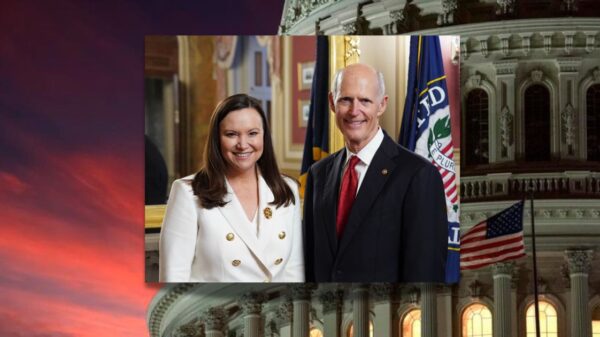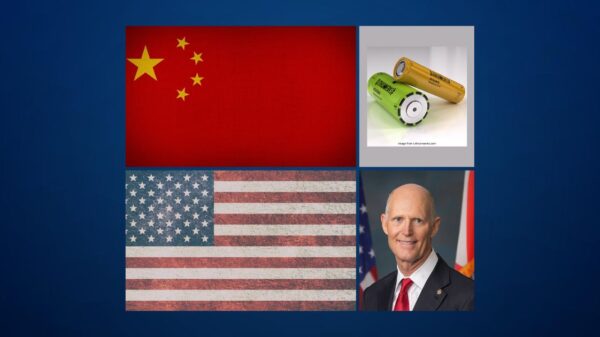Last week, from his perch as chairman of the U.S. House Homeland Security Subcommittee on Transportation and Maritime Security, U.S. Rep. Carlos Gimenez, R-Fla., held a hearing on the “role of technology in aviation security and the Transportation Security Administration’s (TSA) ability to fulfill its mission to secure air travel.”
The South Florida Republican’s office stressed the importance of the issue.
“The Transportation and Maritime Security Subcommittee maintains oversight of the Transportation Security Administration (TSA) and Coast Guard to enhance security of U.S. transportation systems, passengers, cargo, airports, and ports and ensure the safety of our maritime borders,” Gimenez’s office noted.
The subcommittee heard from Austin Gould, the assistant administrator of Requirements and Capabilities Analysis of the TSA and Mario Wilson, the TSA’s assistant administrator of Acquisition Program Management. Tina Won Shermann, the director of Homeland Security and Justice for the U.S. Government Accountability Office, also spoke before the subcommittee.
“One of our chief concerns is the slow timeline of TSA’s rollout of the new technology in the passenger screening process and what this subcommittee can do to expedite the long timelines outlined by the agency,” Gimenez said in his opening remarks. “After the terrorist attack of September 11th, 2001, Congress tasked TSA to protect the nation’s commercial aviation sector.
“TSA cannot carry out this mission without the technological systems it deploys at airports around the country. These systems allow Transportation Security Officers (TSOs) and other TSA personnel to screen for weapons, explosives, and other dangerous items that threaten passenger safety,” he added. “Additionally, TSA’s technological systems facilitate passenger identity verification and ensure that Known or Suspected Terrorists and other dangerous criminals do not board commercial flights. These functions are essential for TSA to carry out its statutory mission.
“The new systems that TSA are bringing online make the agency more effective in carrying out its mission by reducing the possibility of human error and allowing TSOs to focus more attention on interfacing with passengers to resolve pressing issues,” Gimenez continued. “However, I am concerned that TSA has not appropriately prioritized the development and deployment of new technological systems within its passenger screening process.
“Earlier this year, Administrator David Pekoske informed this subcommittee that the agency projects it will fully integrate the new computed tomography, or CT, machines used to screen carry-on luggage and the second-generation Credential Authentication Technology, or CAT-2, systems used for passenger identity verification by Fiscal Years 2042 and 2049 respectively,” he said. “These timelines mean that the agency will take over 20 years to adopt the technologies it needs today. Frankly, this is too slow. I am concerned that TSA has not adequately prioritized accelerating this timeline.”
Gimenez said he had questions and concerns about TSA’s budget requests and insisted the agency was “forgoing opportunities to invest in other technologies like ‘detection at range’ that would further increase TSA’s capabilities at passenger checkpoints and decrease the need for screening procedures like physical pat-downs that some consider to be invasive” before adding there “are two ways in which we can address this issues: funding and focus.”
The South Florida Republican applauded recent congressional actions to offer TSA more funds to use new technology.
“Regarding funding, I was pleased that the House-passed Homeland Security appropriations bill included a $35 million increase from TSA’s original budget request to fund the acquisition of new CT machines.,” Gimenez said. “In our previous hearing with Administrator Pekoske, we discussed the possibility of redirecting the September 11 Security Fee back to TSA. The fee, which is 5 dollars and 60 cents for each air passenger per trip, is intended to fund TSA’s operations at airports. However, over 1 billion dollars in collected fees are currently diverted to the Treasury to pay for unrelated federal debt.
“I believe it is time that we revisit the Fee Diversion and discuss ways in which ending it would help the agency develop and deploy new technologies faster. With regard to focus, I believe that TSA ought to be prioritizing its new technological systems more. Anyone can do anything with an unlimited budget, but even within a limited budget, I still believe TSA can be doing more to bring these new technologies online more quickly,” he added. “In addressing this critical issue, we can ultimately ensure that American air passengers are safer and American citizens are getting a good return on their security fee.”



















